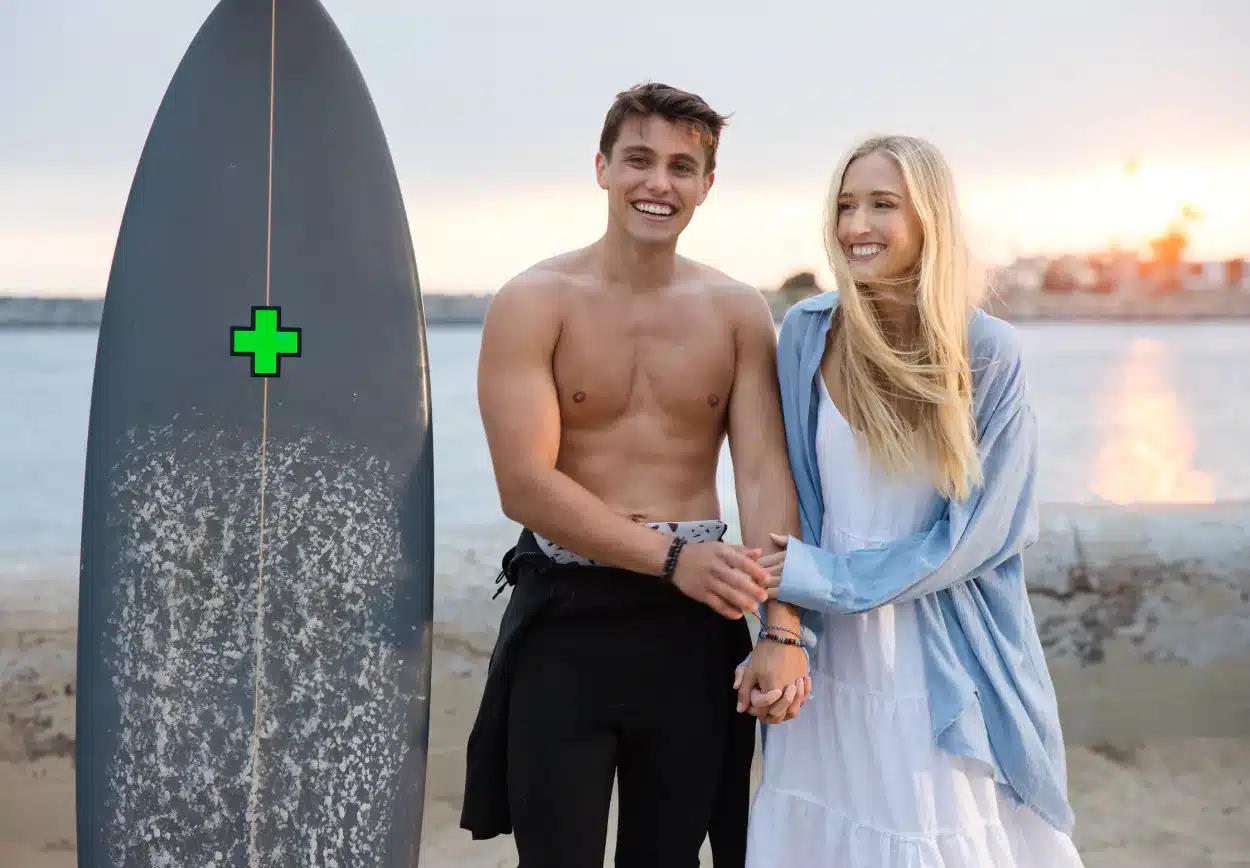Ahh summer, that carefree time of year when we can’t be careless with our sunscreen products or else we burn. One of the best parts of living near the Southern California beaches is the year-round sunshine, June Gloom notwithstanding. However, one of the worst parts of living near the beach is year-round sun damage. To prevent the fun in the sun today from turning into furrows and frown lines tomorrow, it’s important to be using the right sunscreen products.
Screen (the label) Before You Slather
One of the questions frequently asked by our patients at Aesthetics MD is, “What sunscreen should I be using?” It’s a good question because not all sunscreens are created equally. One misnomer is thinking a sunscreen that protects against UVA and UVB rays has you covered. True, you do need a broad-based sunscreen that protects against the sun’s two different kinds of rays.
UVA rays are the long ones that sneak attack even on the gloomiest of June days and play a major role in skin aging and wrinkling (photoaging). UVB, the shorter rays, are the culprits behind skin reddening and sunburn. They are strongest between 10AM and 4PM from April to October. Both UVA and UVB can cause skin cancer.
While a sunscreen that claims it protects from UVA and UVB rays is important, what is even more critical is a sunscreen with both chemical and physical blocking ingredients. Chemical ingredients absorb the sun, while physical ingredients deflect the sun. The list of chemical ingredients is long, but some of the more common ones are Aminobenzoic acid (PABA), which protects against UVB rays, andAvobenzone, which blocks UVA rays. There are really only two physical ingredients that deflect the sun, Titanium Dioxide and Zinc Oxide. Only Zinc protects against the entire spectrum of UVA and UVB rays. Also, Titanium can be problematic for people with acne-prone skin.
Understand Those SPF Numbers
SPF 15… SPF 30… SPF 45… SPF 100… SPF 100+… What do all those numbers mean?
SPF stands for sun protection factor. The number following the SPF is the time you can stay in the sun without getting burned. For example, if your skin can tolerate the sun for 20 minutes without burning, then applying an SPF 30 would allow you to be in the sun 30 times longer or for a total of 600 minutes without burning. Finding your SPF number is not an exact science, but skin therapists refer to a tool called the Fitzpatrick Skin-Type Chart to help them determine your skin type and range of SPF protection. To learn your number, download our quiz at the end of this blog.
Theoretically, you would only have to apply an SPF 30 once a day, but that kind of thinking is what gets people into trouble because they don’t take into account perspiration or water exposure. Unless your only sun exposure for the day is traveling to and from your desk job at work, you will more than likely have to reapply at least once in a day, especially during the summer months. Also, don’t discount sun exposure while driving. If you are taking a long road trip with the family this summer, be sure to reapply your sunscreen during the car ride as the sun’s rays can penetrate your windshield and side windows. For more information on how to stay safe in the sun, check out skincancer.org and the American Cancer Society.
Try Our Sunscreen Recommendations
At Aesthetics MD, our skin care specialists recommend applying sunscreen first thing every morning – winter, spring, summer and fall. We like Physical Fusion UV Defense (Broad Spectrum SPF 50) by SkinCeuticals, a tinted sunscreen with both physical and chemical blockers that can be worn easily under regular makeup or alone. Dr. Anton’s private line of skin care products debuts this fall; it will include a tinted sunscreen with a primer effect, so it will actually make your skin look smoother as it protects it from the sun. To receive a release update, sign up for our newsletter.
We also love a new product line to Aesthetics MD this year, Colorescience. The combination of the Face Primer SPF 20 and Sunforgettable Mineral Powder SPF 50 provides sun protection with a makeup finish. The powder can be applied over makeup or worn alone for a natural, carefree look the way summer is supposed to be.
Quickly and easily determine your skin type, then read our analyses for some type-tailored sun safety advice. Download our fun quiz, What Is My Skin Type?, and find out the sun protection that is right for you.





